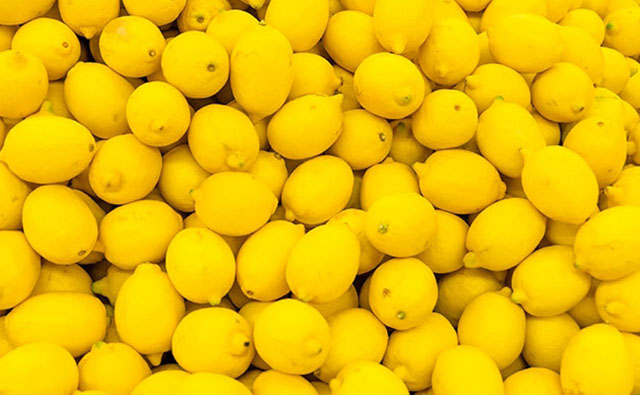Industry News, Cosmetics & Persnoal Cares
A Challenge to ‘Natural’ in the Beauty Space

Industry News, Cosmetics & Persnoal Cares

Image: ©Happi, a trademark of Rodman Media Corp.
The word “natural” has a ring of reassurance about it, but defining natural is far from easy. As there is so little clarity among consumers about what natural means, beauty brands must decide on their own definition, which often leads to further confusion. In the absence of harmonized industry standards, Formula Botanica, a leading UK-based organic science school, has taken a stand by developing its own standards designed to help skin care entrepreneurs work safely and effectively with natural ingredients.
The Formula Botanic standards are designed to sit alongside existing ones.
“There are some similarities between Cosmos, NaTrue and Formula Botanica standards, as we all believe in the promotion, protection and efficacy of natural and organic skin care,” maintains Lorraine Dallmeier, director of Formula Botanica, “We promote the safe use of ingredients and actively work at challenging unhelpful myths that circulate in the green beauty world.”
An example is in the area of natural cosmetic preservation, where Formula Botanic has developed its own system for ensuring it works with naturally-derived compounds that can safely preserve a cosmetic formulation.
“We work with 20+ different chemical compounds that we know are accepted by organic standards and that will keep formulations safe and stable,” explained Dallmeier. The Certificate in Natural Cosmetic Preservation incorporates detailed flow charts that show students how to choose the right preservative for the formulation they are creating.
If you like the article, kindly booking Happi Magazine.
Recognizing that there is no one clear-cut definition of natural, Formula Botanica has devised a system to help its worldwide community of students and graduates understand what natural means to them and to determine which ingredients are comfortable to formulate.
“We want to be able to cater for all definitions of natural, whether you believe an ingredient should have minimal processing or whether you want to work with solubilizers, surfactants and emulsifiers,” said Dallmeier.
Shade 1 is the purest form of natural. An ingredient, such as a seed or nut, is picked and used in the formulation without changing its original chemical shape or structure. Oils, butters and waxes are the best examples, as they do not require added water or emulsifiers. It is also why they can obtain 100% organic certification.
Shade 2 is natural-derived. The harvested ingredient has undergone various chemical reactions, such as fermentation or hydrolysis. Water-based cosmetics and toiletries tend to use this type of natural ingredient in cream and lotion formulations. Dallmeier points out that natural-derived ingredient names often read like chemicals but are obtained from plant-based ingredients.
Shade 3 is nature-identical. This is where the territory becomes more controversial as some people argue that these are not natural ingredients because they are synthetically processed—even though they are identical in structure to the same ingredient found in nature. An example is citric acid which is synthetized in the lab for use in industrial-scale quantities across industries, including cosmetics. There is a sustainability argument for using nature-identical citric acid as the alternative would be to harvest hundreds of millions of tons of citric fruit. Other examples of nature identical ingredients include sorbic acid and salicylic acid.
Shade 4 is the most controversial definition of natural, as it involves taking an ingredient obtained from plant materials and plant sources in order to mimic a synthetic molecule; e.g., natural glycols from sugar cane maize. These synthetic molecules, based on natural ingredients, tend to be used to reduce water activity and act as a preservative or preservative booster.
Dallmeier respects the fact that some natural formulators would not want to use definitions 2, 3 and 4, but argues that in creating a high performance lotions or creams it may be necessary to accept nature-derived or natural-identical ingredients.
Often natural ingredients are the more eco-friendly choice, but in some cases they are not. Rosewood essential oil, “anibe rosaeodora” is a case in point, according to Dallmeier.
“We still see many indie formulators work with rosewood essential oil which is distilled after completely felling the tropical rainforest tree. Logged areas don’t see much regrowth and the tree has consequently been listed on various conservation treaties,” states Dallmeier. “There is often a view that nature is always best but it may be that an ingredient that is nature-identical and developed in a lab might be far more sustainable than one harvested from nature.”
Formula Botanica recommends that brand owners consider the eco-design of their formulation, taking into account the life cycle assessment of their product from cradle to grave; e.g., where the ingredients are sourced, how they are harvested and shipped, how the formulation is designed and how much waste is created, as well as the packaging and its ultimate disposal.
“Only once a brand owner has defined for themselves what natural means, can they truly be transparent with their customers,” concluded Dallmeier.